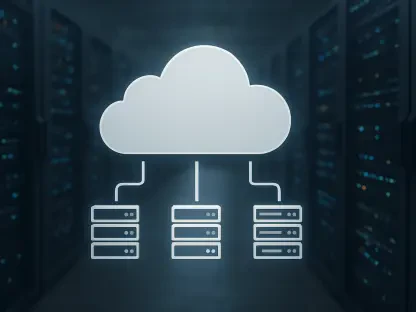The healthcare sector stands at a pivotal moment, grappling with systemic inefficiencies, rising patient expectations, and clinician burnout, while Software-as-a-Service (SaaS) emerges as a transformative force to address these challenges on a global scale. These cloud-based, subscription-driven platforms are reshaping how providers operate, from rural clinics in developing nations to advanced hospital networks in major economies. By automating tedious administrative tasks, slashing operational costs, and enhancing patient engagement, SaaS is dismantling long-standing barriers to efficiency. More than just a technological upgrade, this shift represents a fundamental reimagining of care delivery, enabling providers to prioritize patient outcomes over paperwork. As healthcare systems worldwide face workforce shortages and increasing demand, the adoption of scalable, accessible SaaS solutions offers a timely lifeline, promising to streamline workflows and improve access to quality care across diverse settings.
Tackling Clinician Burnout Through Automation
The staggering administrative burden on healthcare professionals has become a critical issue, with studies revealing that nearly half of a clinician’s workday is consumed by documentation and data entry rather than direct patient care. This relentless focus on paperwork contributes to burnout rates surpassing 60%, undermining workforce retention and the quality of care delivered. SaaS platforms address this crisis head-on by automating routine tasks through cloud-hosted electronic health records (EHRs) and electronic medical records (EMRs). These systems centralize patient data, eliminating repetitive manual input and freeing up valuable time for doctors and nurses. Innovations such as voice-assisted documentation are proving particularly impactful, with projections estimating billions in annual savings for providers by 2027. By reducing the administrative load, SaaS enables clinicians to refocus on meaningful patient interactions, tackling a root cause of dissatisfaction in the profession.
Beyond automation, SaaS fosters seamless integration of disparate systems, ensuring that clinicians can access comprehensive patient information without navigating multiple platforms. This connectivity not only saves time but also minimizes errors that often arise from fragmented data sources. For instance, real-time updates to medical histories and lab results within a unified cloud system mean that healthcare providers can make informed decisions swiftly, enhancing both efficiency and care quality. The growing adoption of these tools—already embraced by 44% of providers, with another 40% planning implementation—signals a broader recognition of their value. This trend is particularly vital in high-pressure environments where every minute counts, as SaaS empowers clinicians to reclaim their focus from bureaucratic demands. The ripple effect of this shift extends beyond individual practitioners, promising a more resilient healthcare workforce capable of meeting modern challenges with renewed energy.
Unlocking Financial and Operational Benefits
One of the most compelling drivers behind the rapid adoption of SaaS in healthcare is the substantial cost savings it delivers, often reducing expenses by 20-40% within the first year of implementation for many organizations. These savings stem from the elimination of hefty upfront infrastructure investments and the reduction of manual processes that drain resources. Unlike traditional on-premises systems, SaaS operates on a subscription model, offering predictable operational costs and budgeting flexibility that appeal to providers of all sizes. The global healthcare SaaS market, valued at over $29 billion in 2024, is projected to soar to $101 billion by 2031, reflecting a robust compound annual growth rate. This financial accessibility ensures that even small clinics can leverage cutting-edge technology, leveling the playing field with larger hospital networks and driving operational efficiency across the board.
Operationally, SaaS platforms streamline critical functions like revenue cycle management and resource allocation, enabling healthcare organizations to optimize their workflows with minimal disruption. The scalability inherent in cloud solutions allows providers to adjust services dynamically, whether handling a sudden influx of patients or expanding into new regions. This adaptability proves invaluable in an industry marked by unpredictability, where rigid systems often falter under pressure. Furthermore, the integration of tools such as telemedicine and patient engagement features within SaaS platforms enhances service delivery without necessitating additional investments. For healthcare administrators, this translates into improved resource utilization and a stronger bottom line, reinforcing the economic case for transitioning to cloud-native systems. As more providers witness these tangible benefits, the momentum behind SaaS adoption continues to build, reshaping financial strategies in healthcare globally.
Elevating Patient Experience and Access
SaaS is not only transforming backend operations but also revolutionizing how patients interact with healthcare systems, placing accessibility and engagement at the forefront of care delivery. Cloud-based patient portals provide round-the-clock access to personal health information, empowering individuals to schedule appointments, review lab results, and communicate securely with providers from anywhere. This level of transparency fosters trust and encourages patients to take an active role in managing their health, a shift that is particularly significant for those with chronic conditions requiring consistent follow-ups. By simplifying access to critical data, SaaS platforms dismantle traditional barriers, ensuring that care is no longer confined to the walls of a clinic or hospital but extends into patients’ daily lives with unprecedented ease.
Equally transformative is the integration of telemedicine capabilities within SaaS systems, which bridges geographical divides and expands access to care for underserved populations. Remote consultations and monitoring tools enable providers to reach patients in rural or isolated areas, delivering timely interventions without the need for physical visits. This is especially crucial in regions with limited healthcare infrastructure, where access to specialists can be a lifeline. Additionally, features like AI-driven reminders and predictive analytics enhance treatment adherence by nudging patients toward follow-ups and medication schedules. These advancements create a more personalized care experience, strengthening patient-provider relationships and improving health outcomes. As SaaS continues to evolve, its ability to make healthcare more responsive and inclusive stands out as a cornerstone of its impact, redefining expectations for what modern care should look like.
Addressing Disparities in Emerging Markets
In emerging markets like India, where many healthcare facilities still rely on outdated practices such as handwritten prescriptions and fragmented billing systems, SaaS is emerging as a powerful equalizer. These antiquated methods often lead to inefficiencies and compliance risks, hindering the quality of care provided. Cloud-native platforms tailored to local needs, such as those offered by regional innovators, integrate EHRs, telemedicine, and practice management tools into unified systems that modernize operations. This transformation allows even small clinics to operate with the efficiency of larger institutions, addressing critical gaps in resource access. By providing affordable, scalable solutions, SaaS ensures that technological advancements are not reserved for well-funded urban centers but reach the grassroots level, where they are often needed most.
The impact of SaaS in these regions extends beyond operational upgrades to fundamentally improve healthcare access, particularly in rural areas with stark disparities. Telemedicine features embedded in these platforms connect patients with specialists hundreds of miles away, overcoming barriers of distance and limited local expertise. This connectivity ensures continuity of care for those who might otherwise go without critical interventions, reshaping health equity in profound ways. Moreover, the modular design of SaaS solutions allows providers to scale services as patient volumes grow, without the burden of significant capital expenditure. This adaptability is crucial in dynamic markets where healthcare demands can shift rapidly due to population growth or public health crises. As adoption spreads, SaaS is proving to be a catalyst for systemic change, empowering providers in emerging economies to deliver care that meets global standards despite local constraints.
Enabling Scalability Across Healthcare Models
A defining strength of SaaS lies in its inherent scalability, which allows healthcare providers of varying sizes—from solo practitioners to sprawling hospital chains—to adopt the same technology without facing prohibitive costs or complexity. Unlike traditional systems that often require expensive customizations or complete overhauls to accommodate growth, cloud-based platforms dynamically adjust to changing needs with minimal effort. This flexibility ensures that a small clinic can start with basic features and expand to include advanced tools like analytics or telemedicine as demand increases, all within the same framework. Such adaptability is a game-changer in an industry where patient volumes and service requirements can fluctuate unpredictably, offering a sustainable path to growth for providers worldwide.
This scalability also supports healthcare organizations in managing sudden surges, such as those seen during public health emergencies or seasonal illnesses, without compromising on efficiency. SaaS platforms enable rapid deployment of additional resources, ensuring that systems remain responsive even under strain. For larger networks, this means coordinating care across multiple facilities with consistent data access, while smaller providers benefit from avoiding the financial strain of over-investing in infrastructure. The result is democratized access to technology, where the size of an organization no longer dictates its ability to deliver high-quality care. As more providers recognize this advantage, SaaS is setting a new benchmark for operational resilience, ensuring that healthcare systems can evolve in step with the communities they serve, regardless of scale or location.
Navigating Challenges in SaaS Adoption
While the benefits of SaaS in healthcare are undeniable, the path to successful implementation is not without obstacles, requiring careful strategic planning to maximize impact. Interoperability remains a significant hurdle, as seamless data exchange between hospitals, labs, pharmacies, and government health registries is essential for cohesive care delivery. Without standardized protocols, fragmented systems can undermine the efficiency gains SaaS promises, leaving providers struggling to integrate disparate platforms. Addressing this challenge demands collaboration across stakeholders to ensure that data flows smoothly, preserving the integrity of patient information and enabling informed decision-making. Only through such coordinated efforts can the full potential of cloud solutions be realized in complex healthcare ecosystems.
Security concerns also loom large, given the sensitive nature of patient data handled by SaaS platforms, necessitating robust safeguards to maintain trust and compliance with regulations. End-to-end encryption, regular data backups, and stringent access controls are non-negotiable to protect against breaches that could have devastating consequences. Additionally, engaging clinicians during the design and rollout phases is critical to align these tools with real-world workflows, preventing the inadvertent addition of new administrative burdens. Providers must also prioritize adaptability, selecting SaaS solutions that can evolve with changing needs without requiring costly replacements. By proactively tackling these implementation challenges, healthcare organizations can mitigate risks and ensure that technology serves as an enabler of efficiency rather than a source of friction, paving the way for sustainable transformation.
Harnessing Data for Proactive Healthcare
SaaS platforms go beyond mere data storage, offering powerful analytics and real-time insights that are redefining how healthcare decisions are made at every level of operation. With access to comprehensive datasets, providers can identify trends, allocate resources more effectively, and anticipate patient needs before they escalate into critical issues. Predictive analytics, for instance, can flag potential health risks based on historical data, enabling early interventions that improve outcomes and reduce costs. This data-driven approach cuts through operational waste, ensuring that staff and equipment are deployed where they are most needed, while also enhancing the precision of clinical care plans tailored to individual patients.
The ability to harness data in real time also empowers administrators to streamline processes that were once mired in guesswork, from inventory management to staffing schedules. By providing a clear picture of operational performance, SaaS tools enable continuous improvement, identifying bottlenecks before they disrupt service delivery. For patients, this translates into shorter wait times and more attentive care, as providers operate with greater foresight. Moreover, the integration of artificial intelligence within these platforms amplifies their impact, offering actionable recommendations that refine both clinical and administrative strategies. As healthcare increasingly leans on data to navigate complexity, SaaS stands out as a cornerstone of smarter, more proactive systems, setting a new standard for how care is planned and executed across diverse global contexts.
Shaping a Cloud-First Healthcare Landscape
Looking back, the ascent of SaaS in healthcare marked a turning point, as cloud-based solutions tackled entrenched inefficiencies with remarkable success, redefining operational and clinical standards worldwide. These platforms alleviated the administrative strain on clinicians, delivering tools that automated tedious tasks and saved billions in costs over time. Patients benefited immensely, gaining unprecedented access to their health data and remote care options that bridged vast geographical divides. From emerging markets to established systems, SaaS proved its worth by scaling effortlessly to meet diverse needs, ensuring that technology was no longer a luxury but a universal enabler of better care.
Moving forward, healthcare organizations must continue to prioritize strategic adoption, focusing on interoperability and security to sustain these gains. Investing in clinician training and stakeholder collaboration will be crucial to align SaaS tools with evolving workflows. As the industry progresses, exploring how artificial intelligence and advanced analytics can further enhance these platforms offers exciting potential for predictive, personalized care. Embracing this cloud-first mindset positions providers to not only meet current demands but also anticipate future challenges, ensuring that healthcare remains agile, accessible, and centered on patient well-being in the years ahead.









